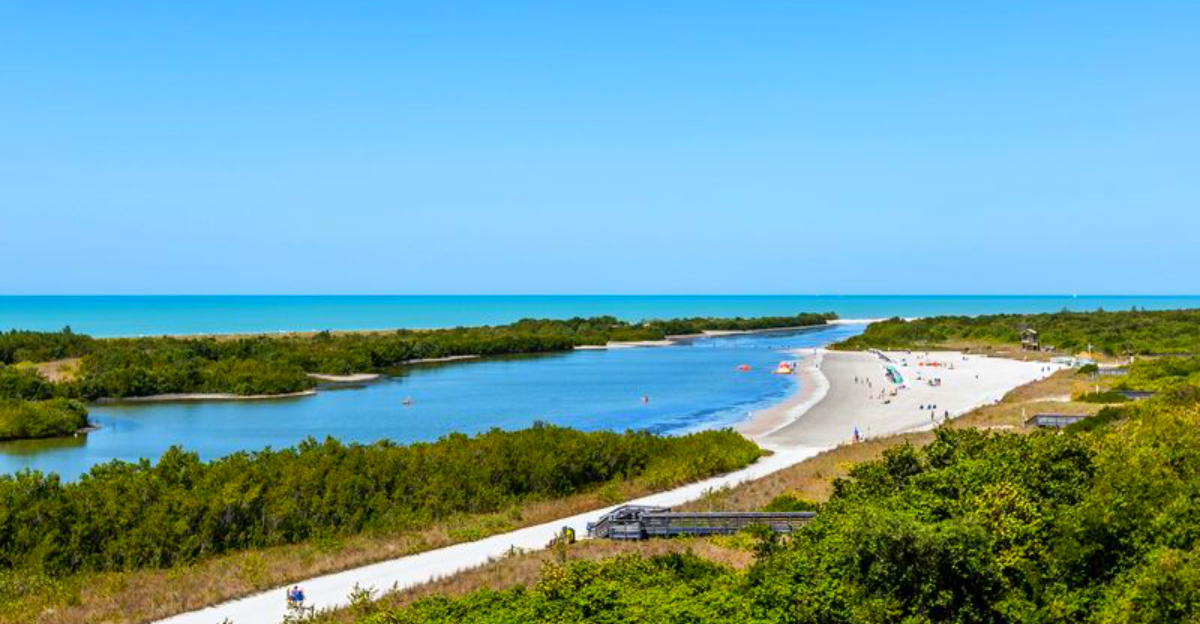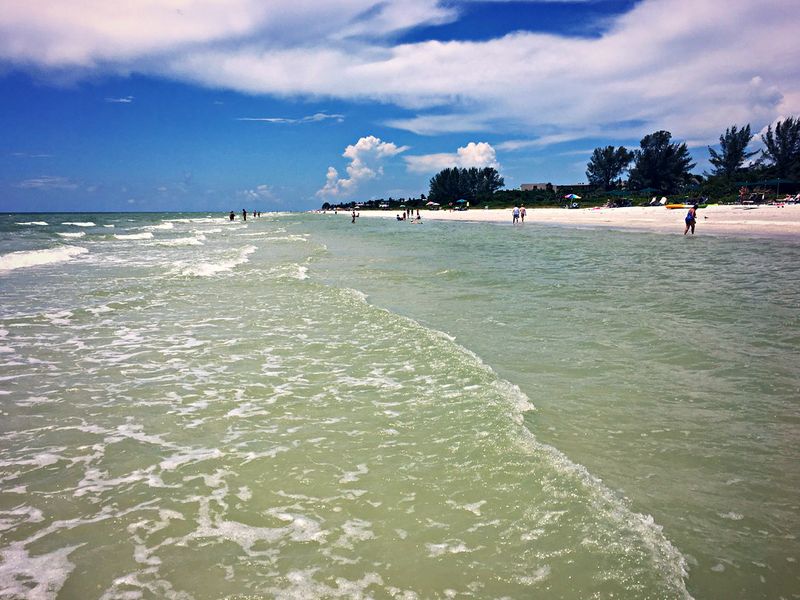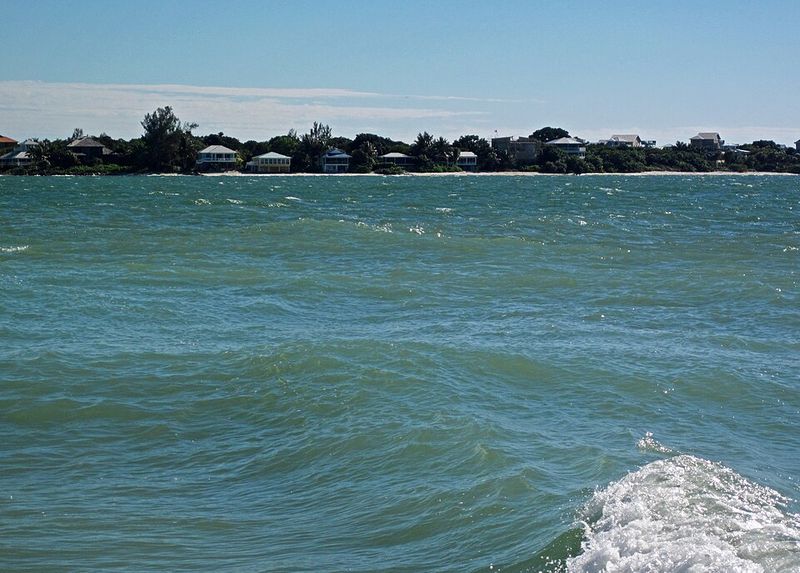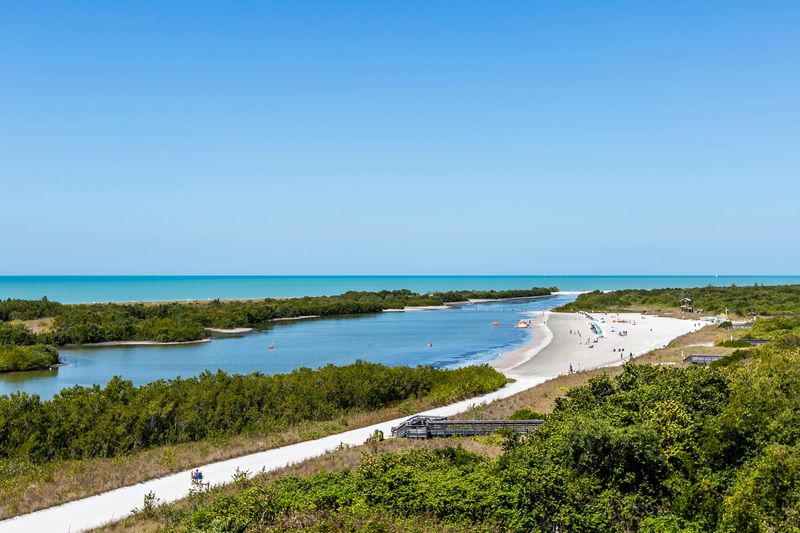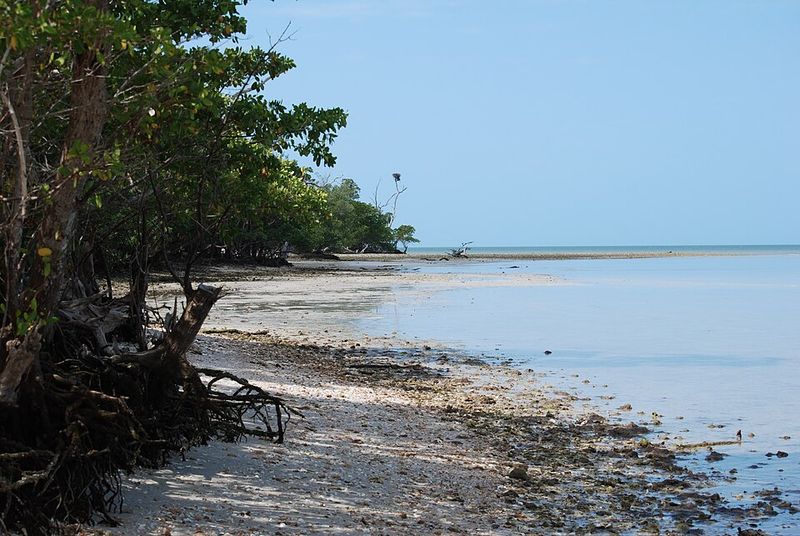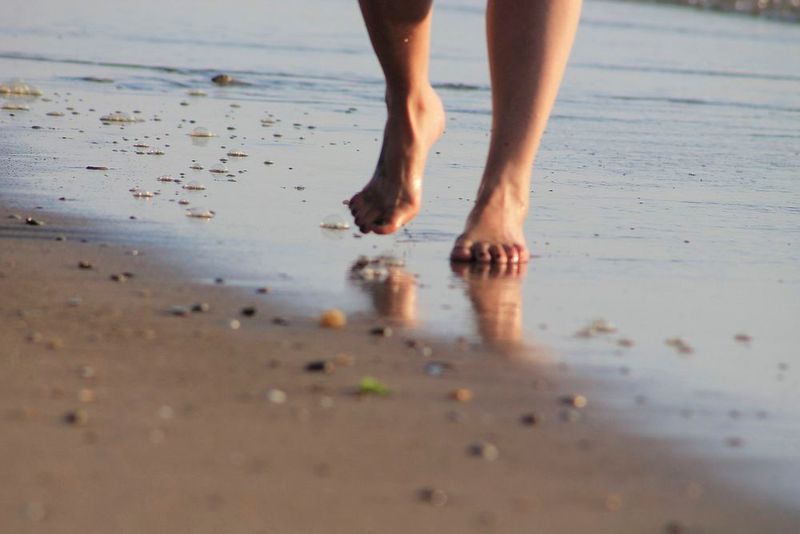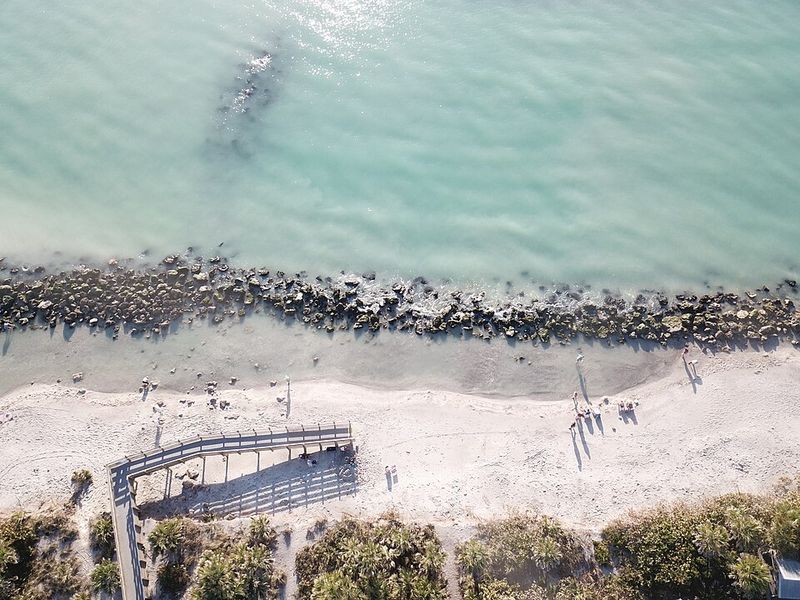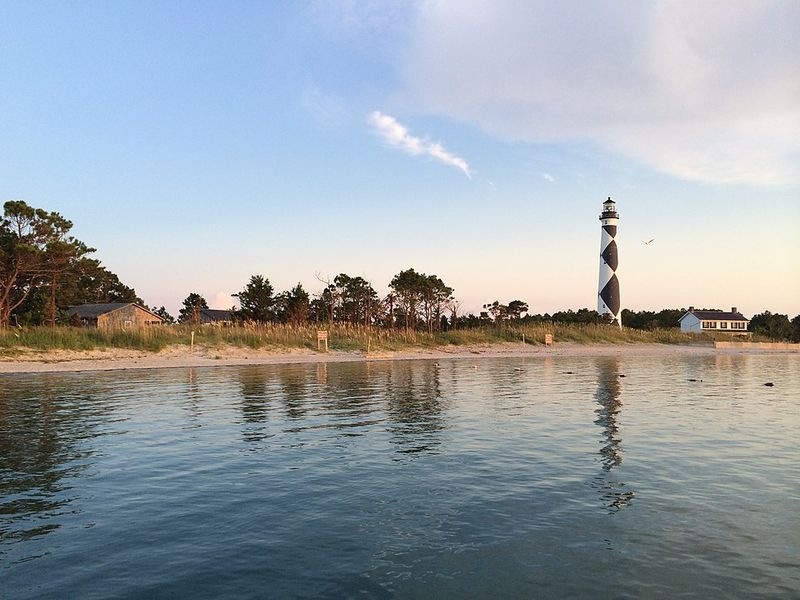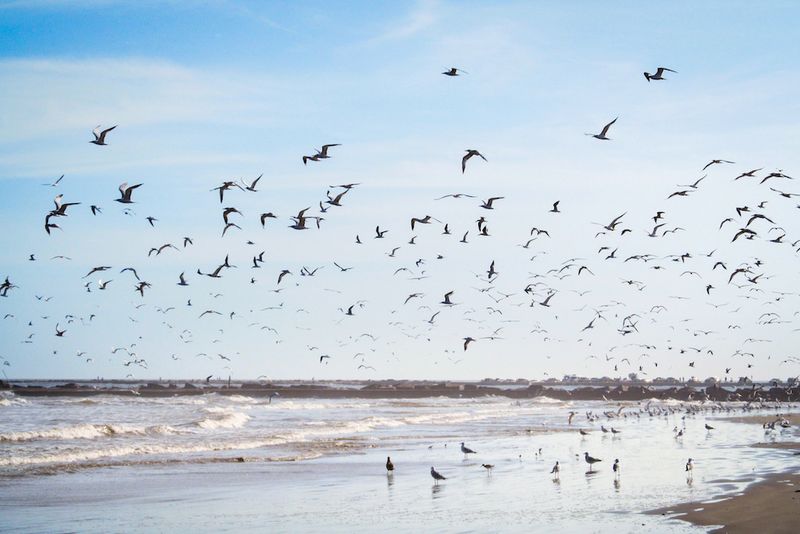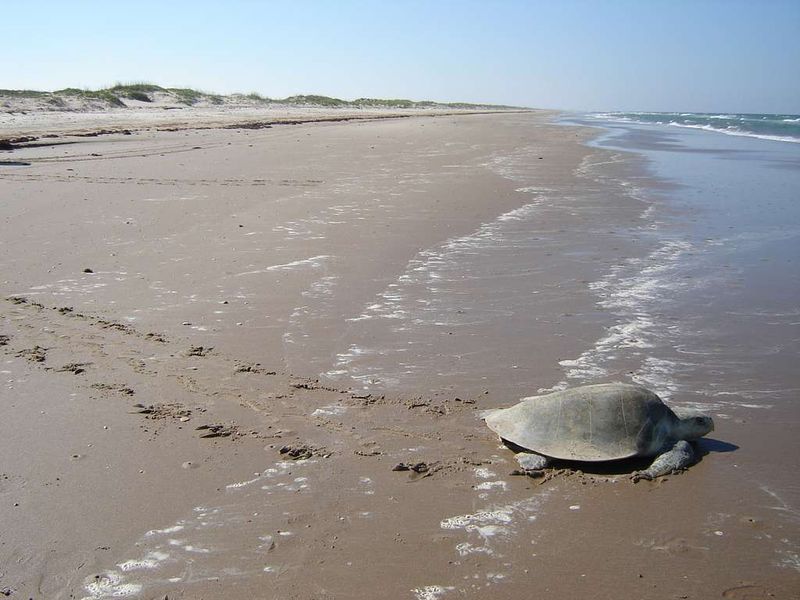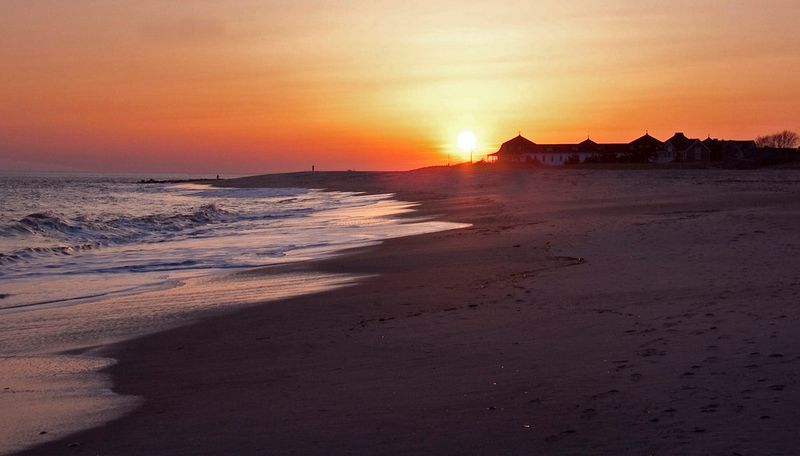Walking along a beach at low tide is like opening nature’s treasure chest. The receding water reveals countless shells, fossils, and colorful finds that usually hide beneath the waves. From Florida’s famous shelling islands to remote Texas shores, certain beaches transform into collector’s paradises when the tide rolls out, offering everyone a chance to discover their own beachcombing treasures.
1. Sanibel Island, Florida (Bowman’s, Blind Pass & Lighthouse Beach)
Sanibel’s unique east-west orientation sets it apart from most Florida beaches. While other coastlines run north-south, Sanibel acts like a giant net, catching shells carried by Gulf currents. This geographical quirk has made it one of the world’s most famous shelling destinations.
When winter and spring low tides arrive, vast stretches of sand emerge covered in shell lines. Beachcombers practice the famous “Sanibel Stoop,” bending to examine treasures. Over 350 mollusk species wash ashore here, including the rare junonia that collectors dream of finding. Bowman’s Beach, Blind Pass, and Lighthouse Beach each offer their own shelling magic.
2. Captiva Island, Florida
Just north of Sanibel lies its quieter sibling, Captiva Island. The same shell-catching geography works its magic here, but with a bonus: fewer crowds mean more shells for you. Fresh drifts appear with each receding tide, creating new hunting grounds.
Fighting conchs with their pointed spires make frequent appearances alongside colorful tulips and sturdy whelks. The murex, with its delicate spines, rewards patient searchers. Many shellers actually prefer Captiva’s more relaxed atmosphere, where you can spread out and explore without bumping into other collectors. Early morning low tides offer the best pickings before the sun climbs high.
3. Tigertail Beach, Marco Island, Florida
Tigertail Beach holds a secret that only reveals itself when the tide drops. A lagoon separates the parking area from the outer Gulf beach, and at high tide it seems like a barrier. But watch what happens as the water retreats.
Suddenly you can wade across easily, reaching the Gulf-facing shoreline where shell piles accumulate. Sand dollars lie scattered like nature’s coins, some still wearing their fuzzy brown coats. Lightning whelks spiral impressively, while olive shells gleam in the sun. The outer beach collects treasures that currents deposit, making the lagoon crossing absolutely worth it for serious shellers.
4. Ten Thousand Islands, Florida
Imagine hundreds of tiny islands scattered across shallow waters, each one a potential shelling goldmine. The Ten Thousand Islands region offers exactly that kind of adventure. These remote shoals load up with shells after weather fronts push through, and low tide lays everything bare for discovery.
Most visitors arrive by kayak or join boat tours to reach the best spots. The isolation means shells pile up undisturbed between visits. Diverse Gulf species appear here, and lucky shellers occasionally spot the prized junonia. The mangrove-lined islands create a wild, untouched feeling that makes every find feel extra special.
5. Barefoot Beach Preserve, Florida (near Naples)
Development ruins many great shelling beaches, but Barefoot Beach Preserve escaped that fate. Protected status keeps this stretch near Naples wonderfully wild. Without hotels and condos lining the shore, fewer people pick through the shells, leaving more for those who make the trip.
The lowest tides expose sandbars and fresh wrack lines that hide interesting finds. Worm snail tubes create curious twisted shapes, while lightning whelks offer classic beauty. Scallop shells fan out in shades of orange and purple. The preserve’s natural state means shells accumulate naturally, rewarding patient searchers who explore the tide pools and sand ridges.
6. Caspersen Beach, Venice, Florida
Forget pretty shells for a moment and think prehistoric. Caspersen Beach earned Venice its nickname as the “Shark Tooth Capital of the World.” Ancient shark teeth from species that swam here millions of years ago wash up constantly, especially at low tide.
Lower water levels and churned nearshore sands create perfect hunting conditions. The dark fossilized teeth stand out against pale sand, making them easier to spot. Collectors find teeth from lemon sharks, bull sharks, and occasionally fragments from massive megalodons. Kids especially love this treasure hunt because every handful of sand might hide a tooth millions of years old.
7. Cape Lookout National Seashore (Shackleford & South Core Banks), North Carolina
The National Park Service knows when shelling works best here. Their official guidance recommends low tide, early mornings, post-storm visits, and winter months when crowds thin out. These barrier islands off North Carolina’s coast deliver exactly what shellers hope for.
Knobbed whelks with their distinctive bumpy spines appear regularly. The real prize is the Scotch bonnet, North Carolina’s official state shell, with its checkered pattern. Bay scallops add colorful variety. Park rules allow collecting up to five gallons of empty shells per person daily, giving you plenty of room to build your collection while protecting living creatures.
8. San José (San Jose) Island, Texas (via Port Aransas ferry)
A short boat ride from Port Aransas transports you to an undeveloped island paradise. San José Island remains privately owned but publicly accessible, creating an unusual situation where nature stays wild while visitors can still explore. Local shellers swear by low tides around full moons for the best finds.
Lightning whelks, Texas’s official state shell, spiral left instead of right like most shells. Empty sand dollars bleach white in the sun, while olive shells add glossy elegance. The constant wash-ups mean fresh treasures arrive daily. The island’s lack of development ensures shells accumulate naturally between your visits.
9. Padre Island National Seashore, Texas (Little Shell & Big Shell Beaches)
The names tell you everything: Little Shell and Big Shell beaches are legendary among Texas shellers. Converging currents create concentrated deposits that the National Park Service confirms grow especially impressive during very low tides. But reaching them requires commitment.
High-clearance four-wheel-drive vehicles navigate the remote down-island stretches where these beaches hide. Little Shell specializes in tiny coquina and cockles that create colorful mosaics. Big Shell delivers larger ark shells and whelk varieties. The adventure of reaching these spots makes every shell feel earned. Pack supplies because services disappear once you leave the developed area behind.
10. Sunset Beach & Higbee Beach, Cape May, New Jersey
Not all beach treasures come from the sea. Cape May’s beaches offer something completely different: wave-polished quartz pebbles nicknamed “Cape May diamonds.” The ebb tide reveals these clear gems alongside genuine sea glass smoothed by decades of tumbling.
Sunset Beach and Higbee Beach provide the best hunting grounds. After storms, sea glass appears in greens, browns, and occasionally rare blues. The “diamonds” catch sunlight beautifully, and while they’re not actual gemstones, jewelers sometimes set them like real diamonds. Collectors love the variety here—shells, glass, and quartz all in one location. Low tide exposes the widest beach area for maximum treasure hunting.
